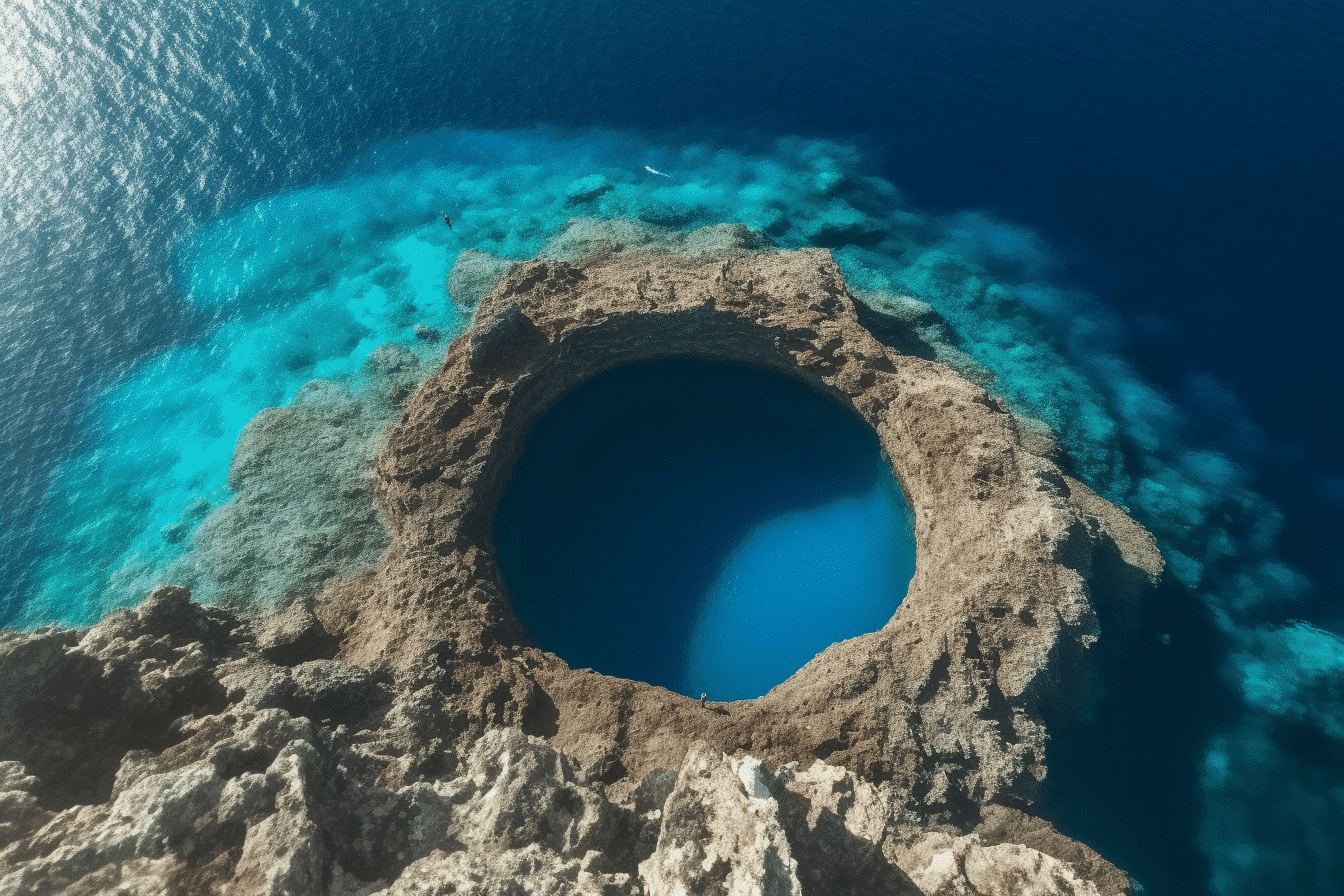The marine sinkhole, Taam Ja’, is in the Chetumal Bay of the famed Yucatan Peninsula. Spanning a depth of 900 feet, it ranks as the second-largest blue hole globally.
A team of Mexican biologists recently unearthed what has been recognized as the world’s second-largest “blue hole.” This monumental underwater cavity rivals the height of several of Mexico’s towering skyscrapers.
Specialists propose that these aquatic pits may have originated during the concluding years of the Ice Age, a period spanning from approximately 110,000 to 10,000 years ago, as stated by the National Commission for the Knowledge and Use of Biodiversity in Mexico (Conabio).
These unique ecological features are thought to host diverse plant and animal species.
This newly discovered blue hole stretches to a depth of 900 feet (over 270 meters), nearly equivalent to the height of Torre Mayor in Mexico City. Standing at 225 meters, the Torre Mayor is one of the metropolis’s tallest skyscrapers.
Taam Ja’, meaning “deep waters” in Mayan, is the designated name for this sinkhole in the Chetumal Bay within the renowned Yucatan Peninsula.
It’s important to note that this Mexican blue hole falls short of the world’s deepest, positioned off the coast of China, which plunges 987 feet (over 300 meters), roughly matching the height of New York City’s Chrysler Building.
In 2021, Mexican investigators initially presented the topography and sampling of Taam Ja’. However, its existence was only formally confirmed in recent months when a new study disclosed its maximal recorded depth of 274.4 meters below sea level, as reported by researchers from the ECOSUR (Colegio de la Frontera Sur).
Interestingly, this enormous blue hole was discovered when local fishermen reported the existence of a sea-based “cenote.” Despite the danger involved, local divers embarked on explorations, sometimes leading to lethal outcomes. According to the ECOSUR study, the area’s inaccessibility, uncharted distribution and abundance have deterred even scholars from comprehensively understanding these formations.
Current knowledge of the vast blue hole indicates a nearly circular form and steep sides with slopes up to 80 degrees, resulting in a conical shape. The researchers employed pulsed sound reflections to determine the configuration of its upper surfaces.
The discovery of Taam Ja’ marks a significant milestone in understanding underwater geology and the unique ecosystems it supports. With its extraordinary depth and special features, this Mexican blue hole has opened a new frontier for marine exploration and research. As scientists continue to investigate its composition and ecology, the findings promise to further our knowledge of marine biodiversity and the formation of such fascinating underwater structures.




